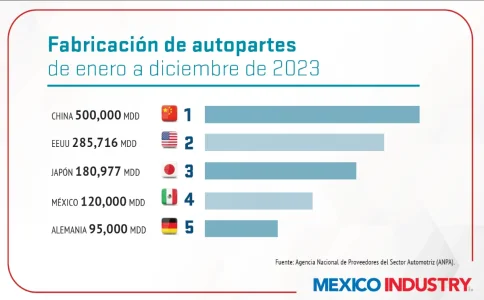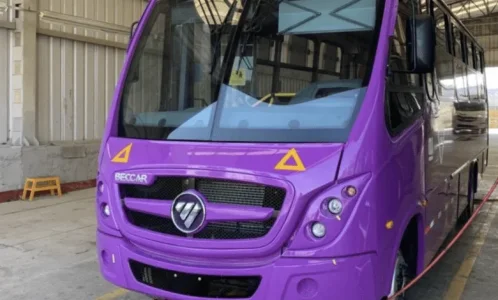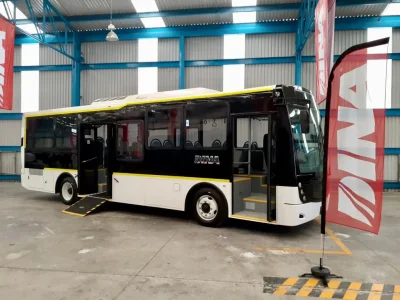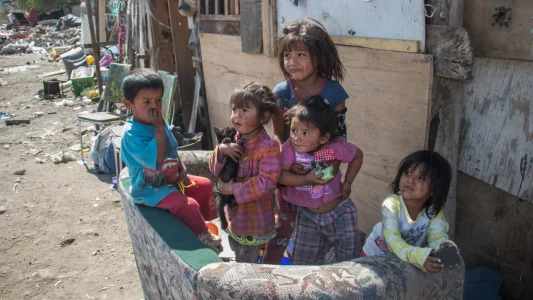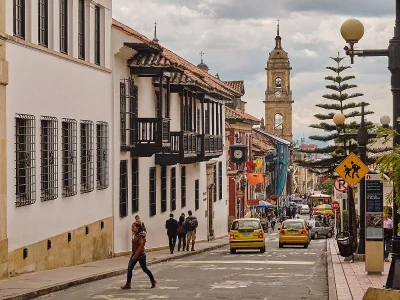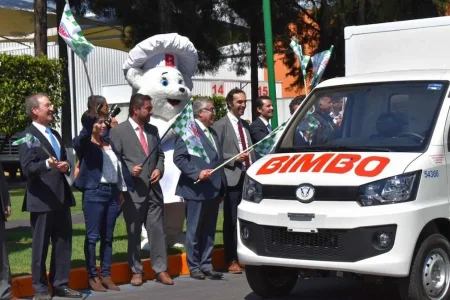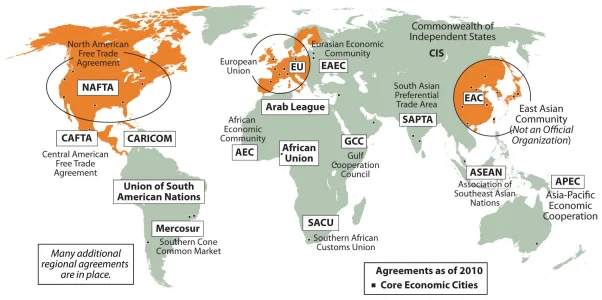Through the project “Development of specialized talent on site for semiconductors”, Intel and the Secretariat of Innovation, Science and Technology (SICyT), through the State Council of Science and Technology of Jalisco (COECYTJAL), opened a new call at the national level in search of 100 young Mexican university students, graduate students or recent graduates, to be trained in the development of chips.
Also in the design of computers, technological validation with artificial intelligence, the cloud, silicon prototype and systems.
This program will give the country's youth the necessary elements for the development of semiconductors and the capabilities to work in a team, providing them with knowledge in areas of platform and package design, validation, software and skills that the industry dedicated to the development of high technologies demands.
The training that the young people will receive will be financed with resources from the government of Jalisco and the company Intel, which detailed its application within the facilities of the Guadalajara Design Center (GDC), one of the most important Intel centers in Latin America.
The 100 students who benefit from the program will gain experience working on advanced projects, in courses in various areas of knowledge of the semiconductor development chain, and a certificate, which will enhance their experience and skills. “There will also be a periodic connection with the business ecosystem through job fairs to allow those involved in the project to successfully enter the world of work,” Intel explained in a statement.
The agreement was signed by Jesús Palomino, general director of Intel GDC; Alfonso Pompa Padilla, secretary of Innovation, Science and Technology of the government of Jalisco; Francisco Medina, general director of COECYTJAL; and Roger Eleutheri, president of Canieti de Occidente.
"For Intel, it is essential to promote collaboration between public and private institutions to enable the development of technological innovation that seeks positive change in society. The development of specialized talent is key to achieving this goal and addressing the need to build a more balanced and resilient semiconductor supply chain. Investing in the education of the country's youth is the key to making Mexico and Latin America global leaders in nearshoring in the semiconductor industry," said Jesús Palomino.
A través del proyecto “Desarrollo de talento especializado en sitio para semiconductores”, Intel y la Secretaría de Innovación, Ciencia y Tecnología (SICyT), a través del Consejo

mexicoindustry.com
Refrigerator production in Mexico has been consolidated in recent years at an international level, occupying a space in most homes, businesses and industries in the United States and Canada, but, after the Covid-19 pandemic, local manufacturing began to gain new ground in other regions of the world, such as South America and Europe.
Mexican manufacturing occupies the first place globally in terms of the export of refrigerators with freezers, the third in compression refrigerators, and is increasingly positioned at the forefront of the industrial and commercial refrigerator categories.
Whirlpool,
Mabe, LG, Hisense,
Criotec, Bosch, Electrolux, among others, are some of the companies that have managed to consolidate themselves and that maintain growth and expansion plans due to the high demand.
The production, distribution, storage and marketing line of refrigerators in Mexico includes multiple commercial regions with great advantages, having connections with international bridges, seaports and highways, in states such as Baja California, Chihuahua, Jalisco, State of Mexico, Guanajuato, Puebla and Nuevo Leon, the latter being a central point for manufacturing.
From the world perspective, Mexico ranks fifth in the production of household appliances, with profits of around 14.8 billion dollars a year, where 24% of production corresponds to the manufacture of refrigerators.
Growth
Given the importance of maintaining a permanent link to promote this industry, the Household Appliance Cluster in the state of Nuevo Leon (Clelac) visualizes a growth of more than 4% during the following years.
The refrigerator occupies an important place, being an essential household appliance for homes and various economic regions. Clelac's general manager, Yoelle Rojas Quintero, explained that "in Mexico, refrigerator production has stood out internationally. We see among the competitive advantages that the manufacturing industry began in this sector, so there is experience, training, constant innovation, applied technology and quality, since that is something that characterizes the workforce."
The growth of manufacturing in household appliances is seen even greater than in the aerospace or automotive industries.
To develop and adapt new skills within the production chain, educational programs focused on industry collaborators stand out, which allow them to obtain recognition and professional diplomas.
More than 413,000 jobs depend on the household appliance sector in Mexico; the recognition of human capital is part of the priority, Rojas Quintero added.
Among the economic data of the production of refrigerators with freezers in Mexico, it stands out that in 2014, 2,648 million dollars were obtained, and in terms of compression refrigerators, around 412 million dollars in this same period.
Innovation and new products
As a basic household appliance, the production of refrigerators in Mexico faces constant changes and innovation processes, which are linked to consumer demands, for example, that they require less electricity, that they have energy saving methods or that in their transport, production and use policies that care for the environment are implemented.
In this scenario, the director of Clelac explained that the association has promoted various meetings and activities that result in new articles.
“In the positive growth scenario that we see for the production of refrigerators in Mexico, we see a trend in implementing energy saving methods, with sensors to reduce consumption, controls from devices and interconnectivity; companies serve each of these areas and are even developing new lines that are attractive.”
Another aspect is the search for increasingly harmless materials, which reinforce the quality already offered with “polymers that can maintain greater freshness, cleanliness and prevent the spread of germs,” said the director.
The ease of obtaining new technologies, obtaining qualified labor, and having competitive and expanding suppliers are some of the advantages that stand out as part of the production lines of refrigerators in Mexico and that have been taken advantage of by companies that currently distribute to the entire world.
La producción de refrigeradores que se realiza en México se ha consolidado en los últimos años a nivel internacional, ocupando un espacio en la mayoría

mexicoindustry.com
For years, Mexico has strengthened its infrastructure and its qualified workforce, attracting significant investments in the aeronautical industry. According to data from the National Institute of Statistics and Geography (INEGI), the sector has shown an annual growth of 8% in the last five years, with exports exceeding 7,000 million dollars annually.“In the country
, there are 450 companies belonging to the aerospace industry, they employ more than 110,000 people, becoming a market with a value of about 4,600 million dollars annually for the country,” said Fadlala Akabani, head of the Secretariat of Economic Development (SEDECO) of Mexico City.But the strategic location is not the only point in favor of attracting investments from this industry. An analysis prepared by ESSAD, a firm specialized in human talent management, determined that labor at a lower cost and with technical knowledge allows it to compete with any international market.“Another factor contributing to this growth is the presence of universities, such as Tec de Monterrey and UNAM, which guarantees that the workforce required for this industry is already being prepared. Mexico has trained aeronautical technicians and engineers since 1937. Currently, there are 21 institutions that offer 52 aerospace education programs at levels from technical degrees to master's degrees,” said Oscar Solís, Director of Administration at ESSAD.The study also reveals other points in favor of the Mexican Republic compared to other countries, such as the presence of strong internal markets, especially in Querétaro, Monterrey and Puebla.The salaries paid for the different specialized positions, which comprise the majority of the workforce, do not vary according to the geographic location of the industry; However, it should be noted that the benefits granted in all cases are higher than the minimum legal requirements, and even more so in the case of the northern states of the Mexican Republic, because the cost of living is higher in that area.“In Querétaro, a large part of the specialized industry is concentrated, so the existing human talent is already hired for the most part; likewise, in the state of Puebla there is a small part of the industry, which makes it difficult to obtain human talent. Monterrey is a city that would ensure less turnover and a more agile and effective attraction of talent compared to other cities,” explained Jesús Moscoso, a lawyer specializing in labor matters and CEO of ESSAD.Areas of opportunityESSAD experts warn that to attract greater investments in the aeronautical sector, certain conditions must be improved. “Foreign companies believe that the control of airport operations by the Mexican Armed Forces and the constant legal reforms can work against their business opportunities in the country,” said Daniel Luna, co-author of this research and director of Pay Roll at ESSAD.Another point they see against them, explained Luna, is the high tax rate paid for payroll and labor rights. However, they believe that having the advice of experts on legal and labor matters at hand can help foreign companies stay in Mexico, with greater certainty about their operations.
En el país, existen 450 empresas pertenecientes a la industria aeroespacial, dan empleo a más de 110,000 personas, convirtiéndose en un mercado con un valor de cerca de 4,600 millones de dólares anuales para el país”, aseguró Fadlala Akabani, titular de la Secretaría de Desarrollo Económico...

mexicoindustry.com

 en.mercopress.com
en.mercopress.com
















